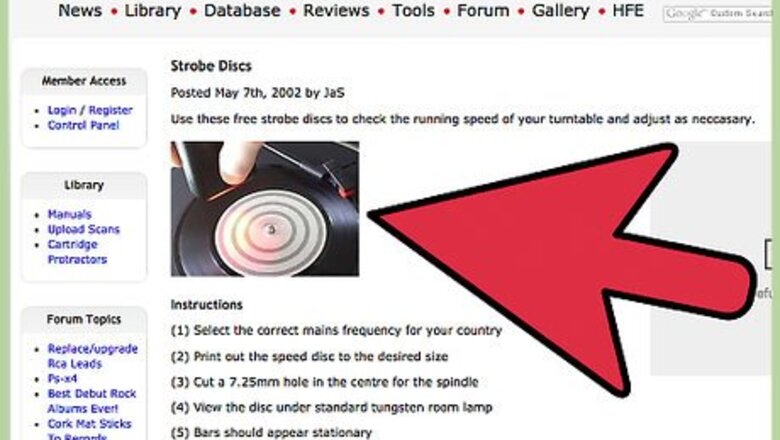
views
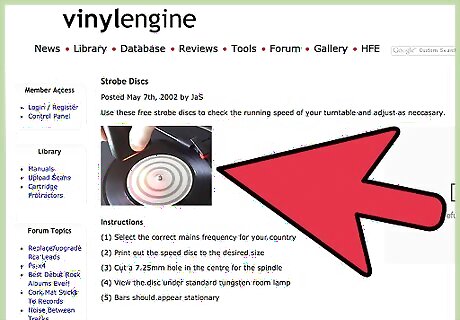
Diagnose if you need a new belt. The biggest indicator that you need a new belt is when the record player turns on, but the turntable doesn't spin. That said, there are other indicators as well: Your records sound lower-pitched, or deeper. You notice a change in speed, especially when the needle hits the record. You've downloaded and used a "strobe disc," which checks the running speed of your record player to make sure it runs well.
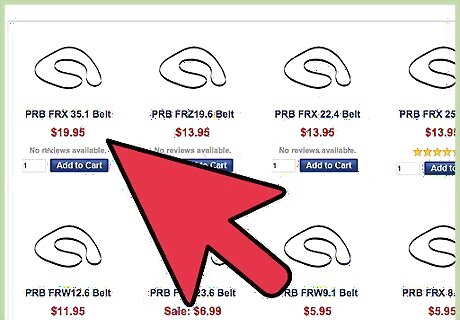
Purchase the correct belt for your turntable. Not all belts are created equally, as the width, length, and even thickness of a belt will make a difference in how your records play. Whenever possible, get the same belt your turntable started with by searching online for "[Your Record Player] Replacement Belt." There is a variety of sites that offer specific belts, such as Needle Doctors or Turntable Belts, and all you have to do is click your make and model. If you cannot get a perfect replacement: Measure the old belt's length, subtracting 5-10mm for the amount it has stretched. Measure the belt's width. If you don't have the old belt, pull off the platter and measure the circumference of the hub (open cylinder on the underside, the belt wraps around this) with a tape measure. Subtract 5-10mm -- this is the suggested length of your new belt.
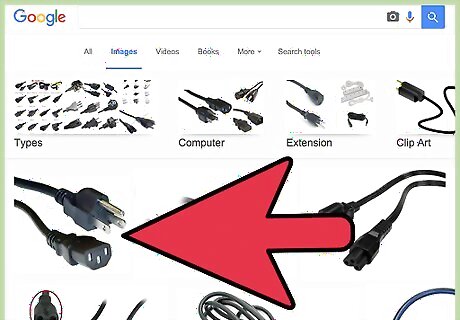
Disconnect the power from the turntable. This will prevent any potential electrical shocks, though they should be rare. Still, it is for the safety of you and the motor.
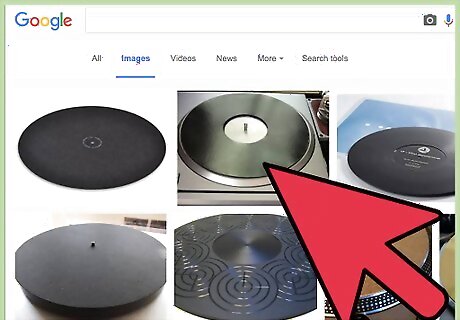
Remove the plastic mat. This is the surface that the record sits on. It should be easily removed from the center shaft. Just pull it off and set it aside.

Remove the platter. The platter is a metal or plastic circle underneath the mat. It usually has two "access ports," small holes that let you see the motor through the platter. It may be attached to the center shaft in a variety of ways, but they are all easy to remove: If there is a small, C-shaped clip attached to the center shaft, use a flat-head screwdriver to pry it off. Save it for later. If there is no clip, but the platter resists removal, it is likely "press-fit." As you pull it up, use a hammer to lightly tap on the center shaft to remove the platter.

Turn the platter upside down on a flat surface. This is also a good time to clean the motor if you haven't in a long time or it looks dusty. Simply use a lint-free rag and some rubbing alcohol to wipe down the exposed parts and remove and dust or dirt.

Stretch the belt over the center hub of the platter. It should fit snugly onto the circle. Some pointers, to make sure things are correctly attached: Make sure the belt is straight. Put it in the center of the circle as much as possible. Make sure it is not twisted or kinked. If there is a ribbon on the belt, line it up with one of the access holes in the platter. This makes it easier to pull the belt onto the motor.

Stretch the belt onto the small peg or post if your platter does not have access holes. If the platter is one solid piece you will need to find the small little peg near the edge of the platter. With the belt on the center circle, stretch the belt onto this post so that the whole belt looks like a round-bottomed triangle. If your platter has access holes, ignore this step.
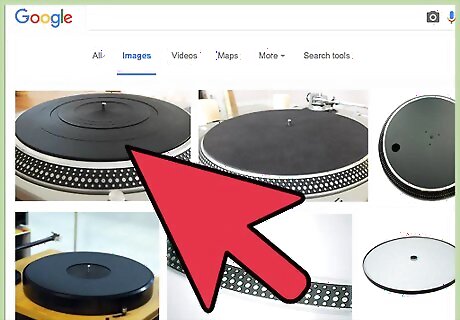
Flip the platter over and put it back on the turntable. Return the platter to the turntable, but do not replace the C-clip yet.

Turn the platter so that the access holes expose the motor. The motor is a small metal shaft coming up from a corner of the turntable. The belt hooks to it, which turns the turntable while the motor is turning. Line up one of the access holes on the platter so you could reach in and touch the motor. If your platter does not have access ports, align the post on the bottom of the platter with the motor spindle. Place the platter down, then spin it two full rotations clockwise and two counter-clockwise to hook the belt up to the motor.

Grab the belt and hook it around the motor. Pull the belt through the access hole and stretch it over the motor spindle. There should be a little cap on the top that prevents the belt from slipping off, so be sure to pull the belt over this and rest it on the body of the motor.

Test the belt by spinning the turntable in both directions. You should see consistent, light resistance. The platter won't spin forever, but it is also not jerking or stopping instantly. If it is, check the belt for kinks or twists and reattach it. If it is smooth, replace the c-clip and mat and plug the player in. Hit start and watch it spin.

Troubleshoot any problems by repeating the process. The most common issue is that the belt is not attached to the motor correctly. Make sure it is beneath the small cap on the top. Another issue is a belt that is too tight or loose. If you cannot spin the platter by hand than it is too tight. If it doesn't spin with the motor on, the problem is it is too loose.



















Comments
0 comment